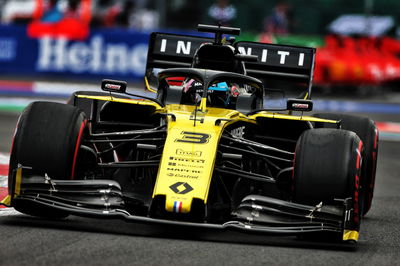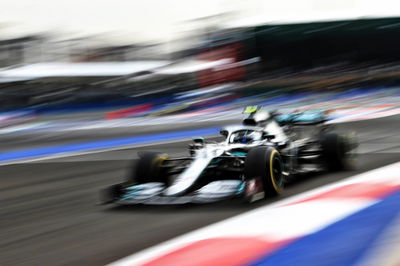Renault used outlawed brake bias aid for ‘many years’
Renault Formula 1 chief Cyril Abiteboul has confirmed the team used its now-outlawed brake bias adjustment system for “many years” before the FIA’s ruling on the device earlier this week.
The FIA-appointed stewards for the Japanese Grand Prix disqualified Renault drivers Daniel Ricciardo and Nico Hulkenberg from the race at Suzuka after deeming the team had breached the sporting regulation that requires the car to be driven “alone and unaided”.

Renault Formula 1 chief Cyril Abiteboul has confirmed the team used its now-outlawed brake bias adjustment system for “many years” before the FIA’s ruling on the device earlier this week.
The FIA-appointed stewards for the Japanese Grand Prix disqualified Renault drivers Daniel Ricciardo and Nico Hulkenberg from the race at Suzuka after deeming the team had breached the sporting regulation that requires the car to be driven “alone and unaided”.
The ruling came following a protest from Racing Point, who initially inquired about running a similar system on its own cars earlier in the year.
Abiteboul said that Renault had not gone to the FIA to confirm the legality of its system as it had no concerns it was within the regulations and it had been used for some time, later expanding that it had been on the car for “many years”.
“We were absolutely convinced, as further demonstrated, that we were legal, and we were legal from a technical perspective,” Abiteboul said.
“It’s a driver aid. A number of things are driver aids. At some point, you need to accept that there’s an element of subjectivity. It’s been used for so many years that we never thought it could be put into question until what happened recently.”
Asked how long it had been on the car, Abiteboul said: “I don’t want to go into the details, but it’s not from this season. It’s not from this season, it’s from before.”
Renault issued a robust response to the penalty following the decision, saying the sanction was disproportionate, with Abiteboul furthering the team’s case on Friday in Mexico.
“We do not deny that it is a form of a driver aid - not to make the car faster but to reduce the workload of the drivers. So then it was always going to be a bit of a subjective assessment as to how far it is really aiding the driver and whether it’s acceptable or not,” he said.
“The stewards have judged it that it’s not acceptable, so be it. I would prefer to put that behind us. For me it is harsh on the team. It’s also even harsher on drivers because it’s a very poor recognition of what they are doing.
“It is shedding a negative light on what they are doing, the way they are performing in the car. I can almost see people on some blogs thinking that the car is braking automatically, which is clearly not what is happening.”
Additional reporting by Julianne Cerasoli.











